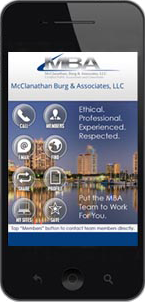Making the argument for — or against — alter ego liability

Sometimes parties with legitimate legal claims realize that their would-be defendants aren’t able to pay a damages award. That’s when they might attempt to recover from a more solvent party — usually a larger company that’s closely associated with the defendant. In such “alter ego” situations, attorneys should hire qualified financial experts to help buttress their arguments.
Determining separateness
To establish that one company should be liable for the wrongs of another — for example, that a parent should be liable for a subsidiary — a plaintiff generally must present evidence that the two entities have no separate existence. One of the most significant factors is whether they maintain their own corporate structures with appropriate corporate policies and procedures.
That may not be the case if the entities conduct the same business activity, operate out of the same location or use the same letterhead. Separateness also may be called into question if the entities have officers or directors in common or retain the same attorneys, accountants or other professional advisors.
Sifting through evidence
A financial expert seeking to prove or disprove separateness might scrutinize such evidence as financial statements, accounting records and intercompany transactions. The expert might find that the entities are commingling funds or assets, failing to keep independent accounting records or using the subsidiary entity’s funds to pay the debts of the parent’s owners, all of which challenge separateness.
The expert also may examine the subsidiary’s capital structure and key financial ratios to determine if it’s undercapitalized — a sign that the subsidiary is financially dependent on its shareholders or parent company. Among other things, a subsidiary can become undercapitalized as a result of fraudulent intercompany transactions. So it’s important to determine whether intercompany transactions are normal, arm’s-length business dealings or tools for the parent to divert funds from the subsidiary. Special terms or conditions, for example, may indicate a transaction wasn’t conducted at arm’s length.
Loan documents and credit ratings can demonstrate financial dependence, too. Is the parent named as the borrower or guarantor on the subsidiary’s loan agreements? Does the credit rating used to obtain loans reflect solely the subsidiary’s status or also the parent’s? If the parent and subsidiary represent themselves as a single entity for credit purposes, alter ego liability might follow.
Building your case
Merely being related isn’t sufficient for a court to impose alter ego liability. Whether arguing for or against the liability, you’ll need a qualified financial expert to study the indicators of separateness and present solid evidence that the house cat is — or isn’t — really a lion in disguise.
© 2015




